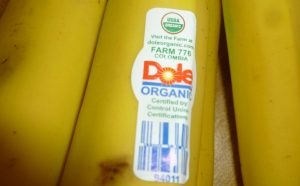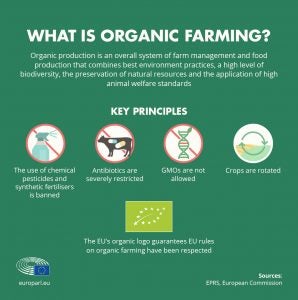Most Americans are familiar with the U.S. Department of Agriculture’s organic label, even if its meaning sometimes causes some confusion. Broadly speaking, the label is supposed to represent that the product was grown using only “natural” methods. What constitutes “natural” is then defined and delineated within the USDA’s organic regulations, set forth by the National Organic Program, a public-private partnership. And those regulations are often scrutinized and discussed ad nauseum, most notably as they relate to seed sourcing and the types of crop protection (pesticides) that are allowed.
Something we don’t talk a lot about though is organic imports. Oddly, the U.S. didn’t start tracking organic trade until 2011. At that time, the USDA began acquiring statistics on 23 products. The number was expanded in 2016 to 33 products. So we have some data about organic imports, but certainly not the whole picture.
Tracked-organic imports equaled $1.65 billion in 2016. Unsurprisingly, our largest imports are crops that we don’t produce in significant quantities — bananas, coffee, and olive oil. We also bring in organic corn and soybeans to meet the demand for organic livestock feed, because American farmers don’t produce enough. In total, 87 different countries sold tracked organic products to the U.S.

Organic trade is dictated by — you guessed it — trade agreements. When organic products come into the country, they can usually use the USDA organic label. So even if they weren’t grown according to our organic certification, they can still use the label. And that raises an obvious question — what does organic certification look like in other countries?
It’s important to be able to answer that question. While many regions don’t have much transparency over organic exports and labeling or have been the focus of investigations, like Turkey, which was blamed in a massive scandal over “organic” soybeans a few years ago, I’m going to focus on a major ally: the European Union. Why? Because in 2012 the U.S. and EU entered into an equivalency agreement. That means U.S. organic products can be sold with the EU organic label as long as they’re certified under USDA’s organic program, and vice versa.
Currently the EU has 8 percent of its farmland in organic production (compared with the U.S. having less than 1 percent of its land certified as such). But Europe announced in 2020 a goal of converting at least 25 percent of its farmland. It also wants to reduce overall pesticide use in half.
The EU sets all organic regulations for all member countries. Organic production is supposed to use “natural substances and processes.” The rules are based on a number of key principals, including the prohibition of GMOs; forbidding the use of ionizing radiation; limiting the use of artificial fertilizers, herbicides, and pesticides; prohibiting the use of hormones; and restricting the use of antibiotics for only when necessary for animal health.
The EU states that its goals for organic production are:
- the responsible use of energy and natural resources;
- the maintenance of biodiversity;
- preservation of regional ecological balances;
- enhancement of soil fertility;
- maintenance of water quality.
Organic animal production in the EU has its own set of regulations that encompasses animal care and animal welfare. The rules are a little more strict than in the U.S. For example, the animal’s feed should be produced on the same farm, or at least raised in the region. Organic feed is required, though there are some exceptions to the rule.

Producers in Europe can only use the organic label when the product contains 95 percent organic agricultural products. Alongside the logo, producers must indicate the regulatory control body and where the farm of origin is located. The farm location must indicate if the product was grown in a non-member country, though it doesn’t have to specify which country it comes from. That’s completely different from the USDA’s organic label, which isn’t required to indicate where the product comes from.
Unfortunately, fraud occurs even in the EU. In 2018, the E.U. launched efforts to maintain the label’s integrity. Due to increasing demand, they discovered that some products bore the organic label without meeting certification requirements. As a result, investigators identified and prosecuted individuals flouting the rules.
The EU’s organic certification appears more comprehensive and regulated than the U.S. program. The most striking difference is that the organic label must be accompanied by the farm’s location. And animal welfare ideals are included as part of the regulations. That doesn’t mean the EU’s certification is better, just different. Overall, the two programs are substantially similar.
Amanda Zaluckyj blogs under the name The Farmer’s Daughter USA. Her goal is to promote farmers and tackle the misinformation swirling around the U.S. food industry.



